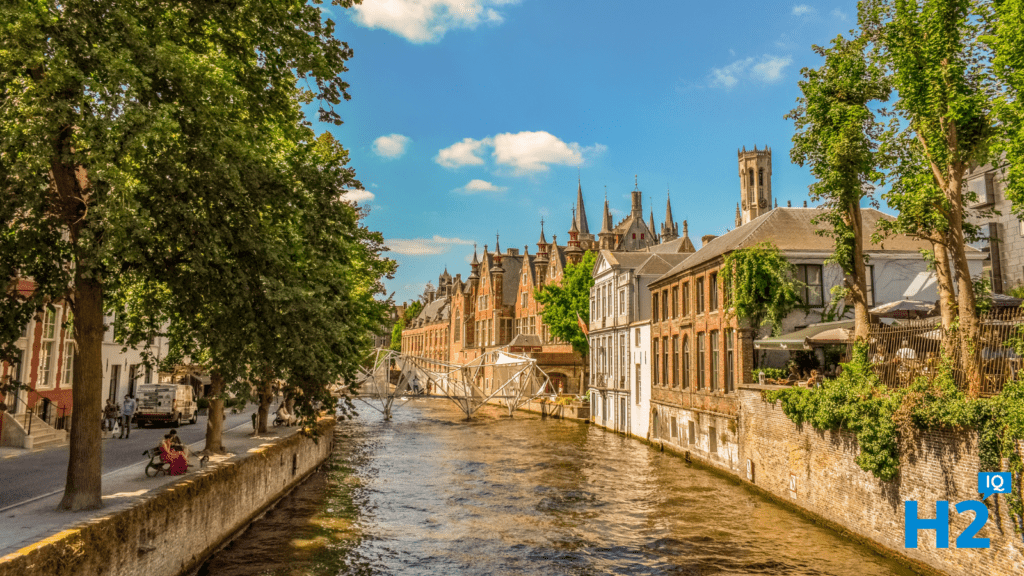Plug signed a 30-year concession agreement to build the plant at the Belgian port, the second largest in Europe. Plug plans to erect a 100-megawatt green hydrogen plant, using its own electrolyzer and liquefaction technology, on 28 acres of land leased under the agreement. Plug will produce up to 12,500 tons per year of liquid and gaseous green hydrogen for the European market.
Plug to erect a 100-megawatt green hydrogen plant, using its own electrolyzer and liquefaction technology
Plug signed a 30-year concession agreement to build the hydrogen production plant at the Belgian port in order to supply the European market with gaseous and liquid green hydrogen. Green hydrogen is made by running an electric current through water, a process called electrolysis. Plug plans to erect a 100-megawatt green hydrogen plant, using its own electrolyzer and liquefaction technology, on 28 acres of land leased under the agreement. The facility will have an initial capacity of 12,500 tons per year of liquid and gaseous green hydrogen for the European market with plans to expand production tenfold.
The plant will use electrolysis to split water molecules into hydrogen and oxygen and then liquefy the gas so it can be transported to market
Plug plans to erect a 100-megawatt green hydrogen plant, using its own electrolyzer and liquefaction technology, on 28 acres of land leased under the agreement.
Green hydrogen can be used in a number of ways, including as a fuel for vehicles or to power industrial processes. Plug Power is looking to take advantage of the increasing demand for green hydrogen by building a plant in Belgium that will produce up to 12,500 tons per year. The plant will use electrolysis to split water molecules into hydrogen and oxygen and then liquefy the gas so it can be transported and stored more easily. This project represents a significant investment by Plug Power, but one that could pay off handsomely if the market for green hydrogen continues to grow at its current pace.
Plug will produce up to 12,500 tons per year of liquid and gaseous green hydrogen for the European market.
Plug will produce up to 12,500 tons per year of liquid and gaseous green hydrogen for the European market.
Green hydrogen can be used in a variety of ways, including as a fuel for cars and trucks, or to power generators. The environmental benefits of green hydrogen are significant; it produces zero emissions when burned, and the process of producing green hydrogen emits far less carbon than traditional methods of generating energy. In addition, green hydrogen is a renewable resource that can be produced sustainably.
Benefits for Energy managers: Saving money, reducing carbon emissions
Energy managers can save money by reducing our carbon emissions. By investing in green hydrogen production, energy managers can not only reduce their reliance on fossil fuels but also create a new revenue stream by selling green hydrogen to the market as a replacement for diesel and other fossil fuels. This will help us save money and send a strong message to the rest of the world that we are serious about fighting climate change. All you need is water, renewable electricity generated from wind turbines, hydroelectric dams, or from solar panels, and an electrolyzer.





